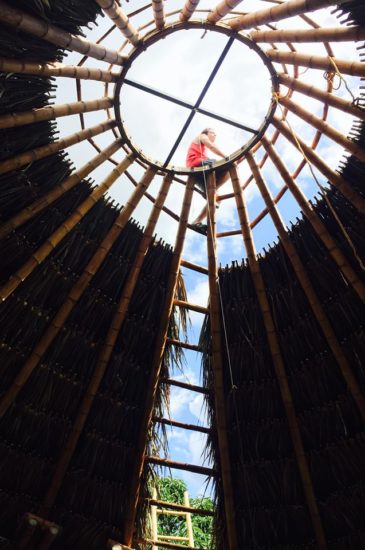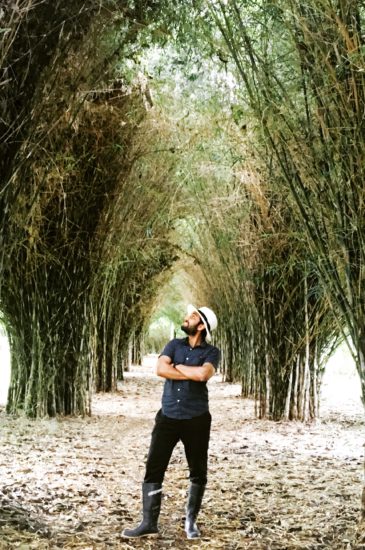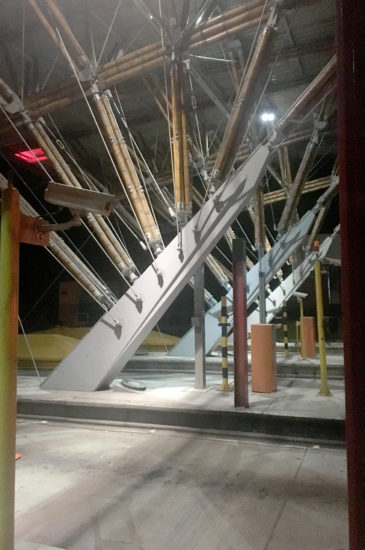As natural disasters and political and economic instability have displaced millions of people globally in recent years, many are in urgent need of feasible and eco-friendly design solutions for temporary housing. I traveled to Colombia for the purpose of training in traditional bamboo construction and to gain a better understanding of assembly systems that might be practical, reproducible, and adaptable anywhere in the world.
-



Once I started navigating through the country, I quickly realized that bamboo is perceived as more than just a cheap and renewable material. Its physical aesthetics and function are woven deep into the cultural fabric of the country. From the ancient earthquake-resistant vernacular houses to bridges, toll booths – and even furniture and artifacts – bamboo has evolved as material that is highly integrated into people’s lives.
To understand the various species of bamboo and its biological properties, I was invited to stay on a bamboo farm, where I learned much about its cultivation and harvest. Guadua, a giant species found in Colombia, translates to “a gift of god.” There is no plant in nature that can grow so fast, producing as much as one meter in a day. So, it’s a constant harvest. Bamboo is not a tree – it’s a timber grass – so when you cut it back, it regenerates, you’re not killing the whole plant.
As a part of my research, I was able to connect with a local architect based out of Anapoima, a settlement near Bogota, and participate in the actual construction process (framing) of a bamboo pavilion. This provided me with a hands-on experience about processing and preparing the bamboo for construction, laying foundation, and assembling the various joinery details of beams.
Bamboo is better than steel as it is less heavy. Its proportion to weight and resistance is unmatched. Bamboo’s success is due not only to its physical attributes, but also its accessibility. It is abundant in many places and grows quickly and easily when planted new. The possibilities for its potential are limited only by the extent and agility of its users’ imagination.
About the Author
Ronak Hingarh received his bachelor of architecture from the Balwanth Sheth School of Architecture in Mumbai, India, and his master of architecture from the Rhode Island School of Design, where he also served as an instructor in environmental design. A skilled graphic illustrator, Ronak excels at the creation of working and presentation drawings, and also enjoys more hands-on processes such as metal- and woodworking.